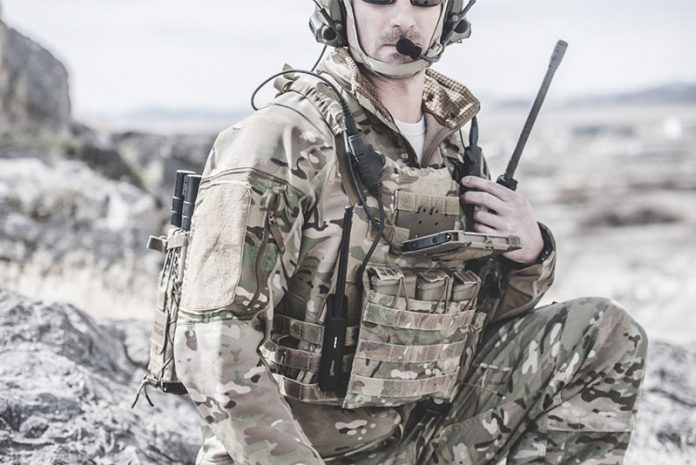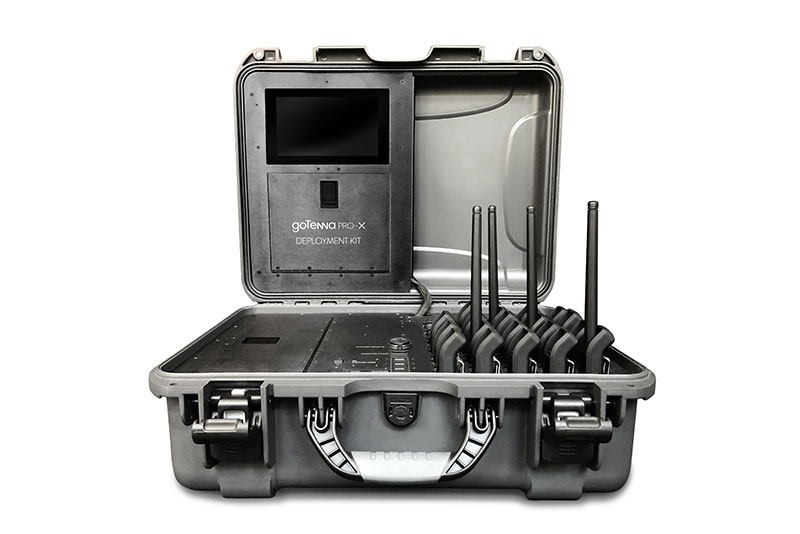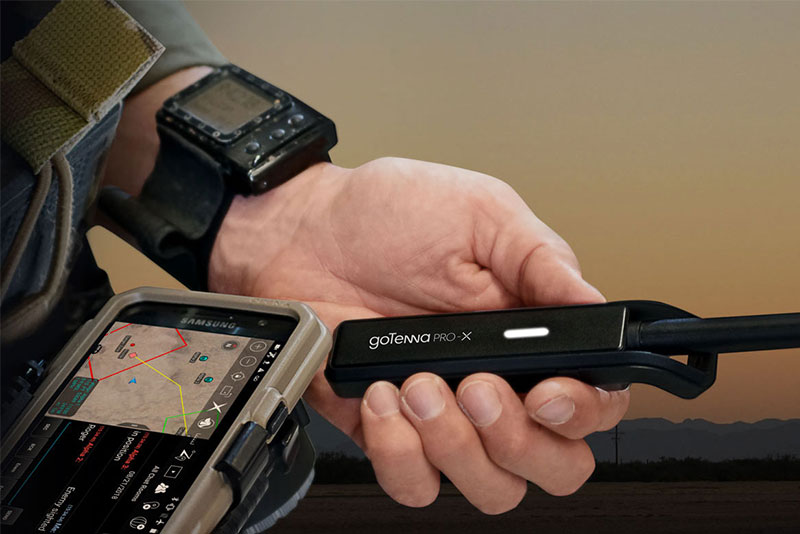
When a squad or small team enters an area with poor communications, their situational awareness and safety becomes subject to a cell or satellite signal that may be unreliable or even nonexistent.
As US Marine Corps Maj. General Mark Wise, Assistant Deputy Commandant, Combat Development and Integration (CD&I), recently observed at an Advanced Naval Technology Exercise (ANTX) briefing in July, “Mesh networks hold real potential in addressing the challenge of operating in a signal-denied environment.”
A low cost, lightweight mesh networking device from goTenna is becoming the likely solution for this challenge. The goTenna Pro X unit is a 79 gram radio transmitter/receiver that pairs via USB or Bluetooth connection to an end user’s iOS or Android device.
Within an ad hoc network of two or more (but typically around 20) units, goTenna’s mesh protocols support the exchange of near real-time position data, text-based messaging, and map markings in situational awareness applications such as ATAK, LifeRing, fiResponse, and goTenna’s own Pro application.
Staying on ATAK without connection to a centralized network
ATAK — the mobile app that’s quickly becoming the de facto blue force tracking system for the U.S. and other countries — requires a constant network connection that can be difficult or expensive to provide in off-grid environments. With goTenna, teams can now extend the app’s valuable location and communications capabilities beyond its expected reach.
Starting at $849 per unit, goTenna Pro X supports key ATAK features, including position location, chat, point sharing and routing with standard 2525B symbols, mission packs, as well as 9-line requests.
“Anyone with a smartphone or tablet can quickly connect to the goTenna network and become a node on ATAK,” said James Schueren, Vice President Institutional Business Development & Sales at goTenna. “This allows for rapid deployment to each individual soldier, but more importantly, a server backhaul to a variety of other networks for command and control.”
For teams fully off the grid, goTenna offers a Deployment Kit, which securely stores, charges, and transports up to 30 units in a ruggedized case and also acts an application server for radio frequency reprogramming and ATAK downloads.

Interoperability at a low cost
To date, the goTenna Pro X tactical communication system has been fielded and is in use by special and conventional military forces in the U.S., as well as smaller deployments with other countries. Law enforcement and emergency management agencies in the U.S. are also deploying the devices in their operations. For a fraction of the cost, many teams are gaining access to real-time operator information without increasing training or deployment efforts.
“For years, the communications market has been pushing for increased bandwidth that demands a heavier radio, with bigger batteries, more complexity, and a high cost,” said Schueren. “In a signal-denied warfare environment, we’re learning that the size, weight, and power impacts for those kinds of radios aren’t always the best fit for each individual dismounted soldier — let alone a multi-force mission.”

goTenna Pro X devices can be programmed on separate frequencies, permitting different teams to operate and transmit encrypted data without interference.
Exploring long-range possibilities
While goTenna reports a nominal network range of approximately 4km point to point, their mesh protocols allow for up to 6 hops across devices, thus considerably expanding their potential coverage area.
A team deployed inside a building or tunnel could also use individual Pro X units as standalone repeaters relaying transmission between the clearing team inside and those outside. This technology has also been tested as a complement for remote sensors and as a payload for small unmanned aerial systems.
With a compact form factor, proven adaptability, and an approachable price point, goTenna’s mesh networking device is an ideal communications solution to the challenges small tactical teams face in off-grid and signal-denied warfare environments.












